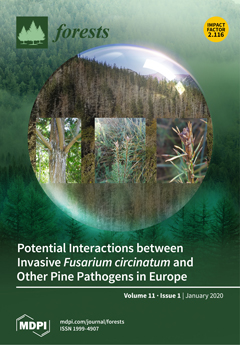The study on the function and sequence of
PHR1 (Phosphate Starvation Response gene 1) gene, which plays a central role in plant phosphorus (Pi) signal regulatory network, is of great significance to further study response mechanisms to Pi deficiency. In this work, the previously selected Pi-efficient Chinese fir clone M32 was used as research material to obtain the full-length sequence of
ClPHR1 transcription factors in Chinese fir by RACE (Rapid Amplification of cDNA Ends) full-length cloning technique, and the structure, function and subcellular localization of
ClPHR1 gene encoding protein were analyzed. The temporal and spatial expression characteristics of
ClPHR1 transcription factors in Chinese fir under low Pi stress were also analyzed, and the overexpression of
ClPHR1 gene in transgenic
Arabidopsis thaliana was obtained to verify the function of
ClPHR1 gene under low Pi stress. The results showed that the length of the
ClPHR1 gene obtained by rapid amplification of cDNA ends technique was 1954 bp, of which 1512 bp was an open reading frame.
ClPHR1 was predicted to be an unstable hydrophilic protein with only one possible transmembrane domain. The
ClPHR1 gene had a highly conserved MYB-CC domain, which is similar to the
PHR1 gene of other plants. Phylogenetic tree analysis showed that the sequence had high homology with
PHR1 genes in the
Prunus species. The
ClPHR1 was expressed in all organs of Chinese fir, with the highest expression in the roots, followed by the leaves with the lowest expression in stems.
ClPHR1 expression in roots was reduced dramatically at the beginning of Pi stress treatment and followed by an increase at 7days; in leaves, it increased dramatically at the beginning of Pi starvation treatment and showed a decreasing trend after 3 days; in stems, the expression level of
ClPHR1 increased after 7 days of Pi stress treatment. The transient expression vector was introduced into plant cells, and it was found that
ClPHR1 was located in the nucleus and was a MYB-CC transcription factor expressed in the cell nucleus. The
ClPHR1 overexpression vector was constructed, and then introduced into
Arabidopsis thaliana by agrobacterium infection inflorescence method. The expressions of Pi transporter genes,
AtPHT1;1, AtPHT1;2, AtPHT1;8 and
AtPHT1;9, was significantly higher in the overexpressing strain than that in the wild type strain. The results suggest that the
ClPHR1 transcription factor could regulate the regulation of downstream Pi transporter gene and increase Pi utilization efficiency of the Chinese fir under Pi stress.
Full article





